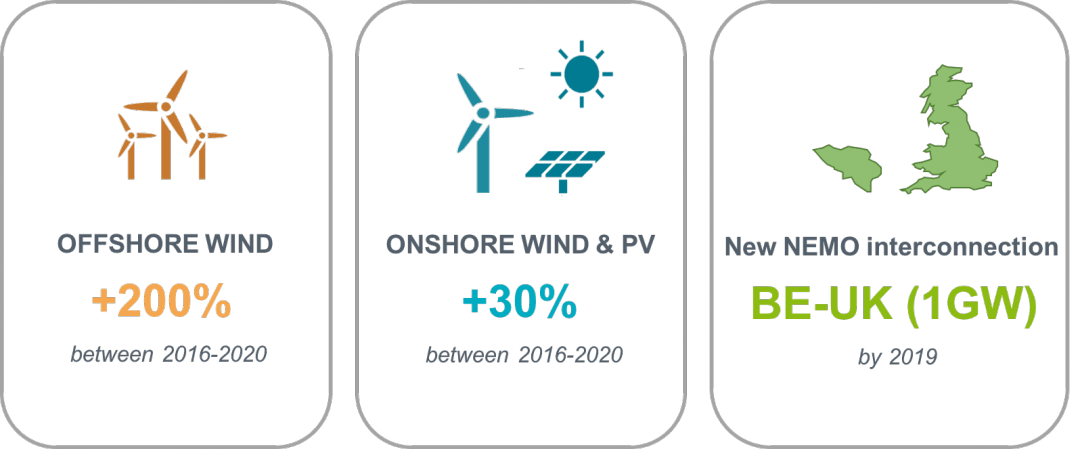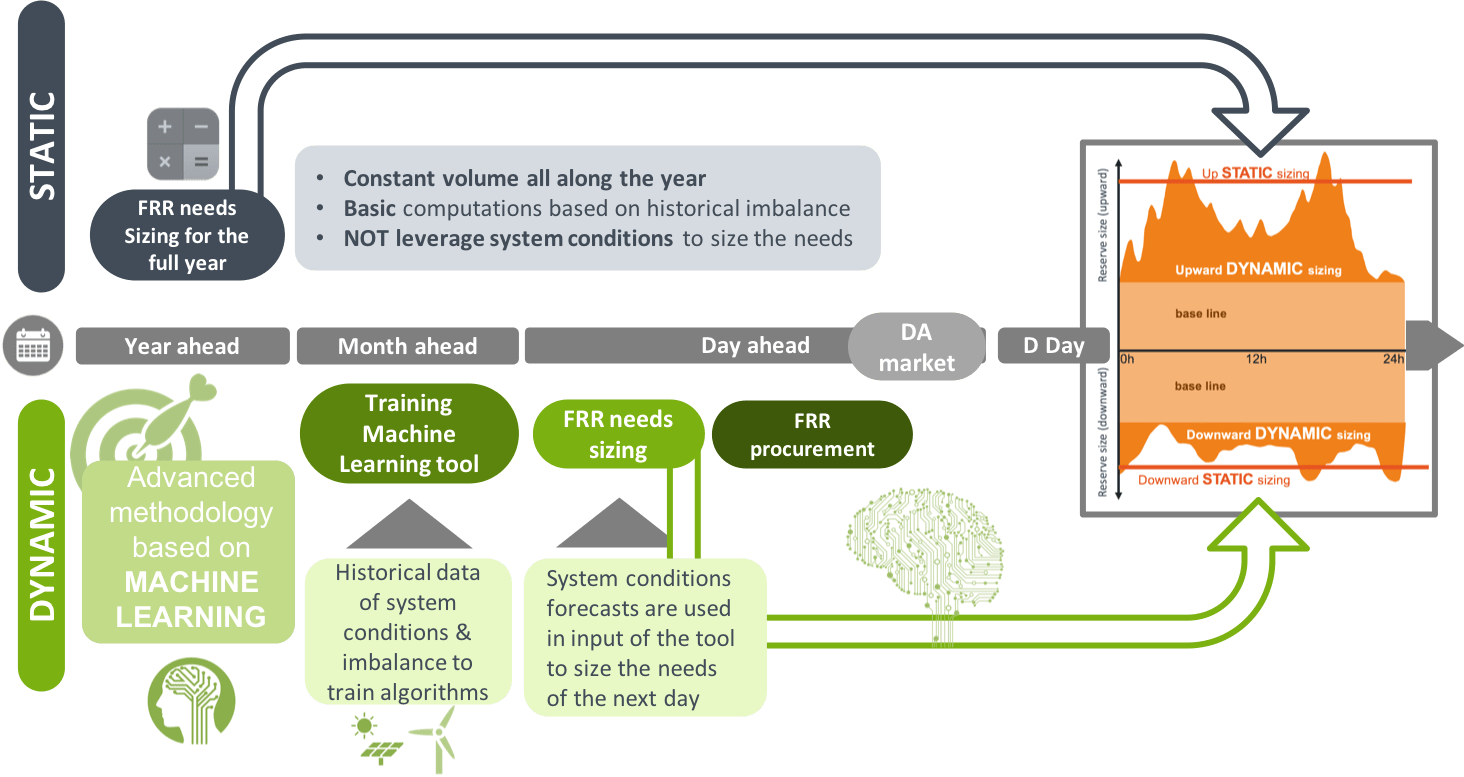Machine Learning for a dynamic sizing of Elia balancing reserves!
/--/uploads/2025/08/featured-image-Machine-Learning-for-a-dynamic-sizing-of-Elia-balancing-reserves.webp)
In October 2017, Elia has published the results of a new study performed in collaboration with N-SIDE, on the Dynamic dimensioning of reserves. Based on accurate Machine Learning technologies, this new methodology will allow Elia to size the balancing reserves needs closer to real time based on day-ahead predicted system conditions.
Read more how artificial intelligence algorithms allow to increase further the reliability, affordability and robustness of our power system.
1. Challenges
As a TSO, Elia is responsible for contracting reserve products in order to secure the system and compensate the imbalances (mismatches between consumption and production in real-time). The Frequency Restoration Reserve (FRR) is one of the main reserve product and is currently sized every year based on a probabilistic rule applied on historical measures of imbalance.
With the deployment of intermittent Renewable Energy sources at large scale and the development of large HVDC cables, the level of system imbalance risk faced by the system is more and more driven by the punctual system conditions than by large baseload unit.
These changes are coming fast and will be already significant by 2020. It is expected that such game changers will make the current yearly sizing of FRR needs to increase in the coming years and therefore be less appropriate.

2. The methodology
However, such risk could be mitigated by performing the FRR dimensioning and procurement in a dynamic way (e.g. in day ahead). The dynamic dimensioning of reserves will allow to leverage the system conditions forecasts thanks to advanced analytics such as machine learning, to predict the imbalance risk and size the reserve needs accordingly. This will prevent to contract large amount of reserve when it is not needed. And inversely, it will allow to detect the cases when the system is stressed and contract the appropriate amount of reserve to secure it.
Several techniques, relying on machine learning algorithms, have been developed during this study and tested on different study cases representing the likely evolution of the Belgian system.

3. The results
The dynamic approach has shown positive results:
1. A better reliability management as higher FRR needs are sized during higher risk periods and lower FRR needs are sized during lower risk periods. Proper reliability is secured more constantly along the year
2. Positive Business Case : Volume reduction more than 85% of the time and Financial gains expected of more 2M€/year (outweighing the implementation costs).
3. Robust methodology which remains beneficial & feasible towards the middle and long term system conditions: towards 2020, as well as towards 2027 in a post-nuclear era.
/--/uploads/2025/08/PMA.jpg)